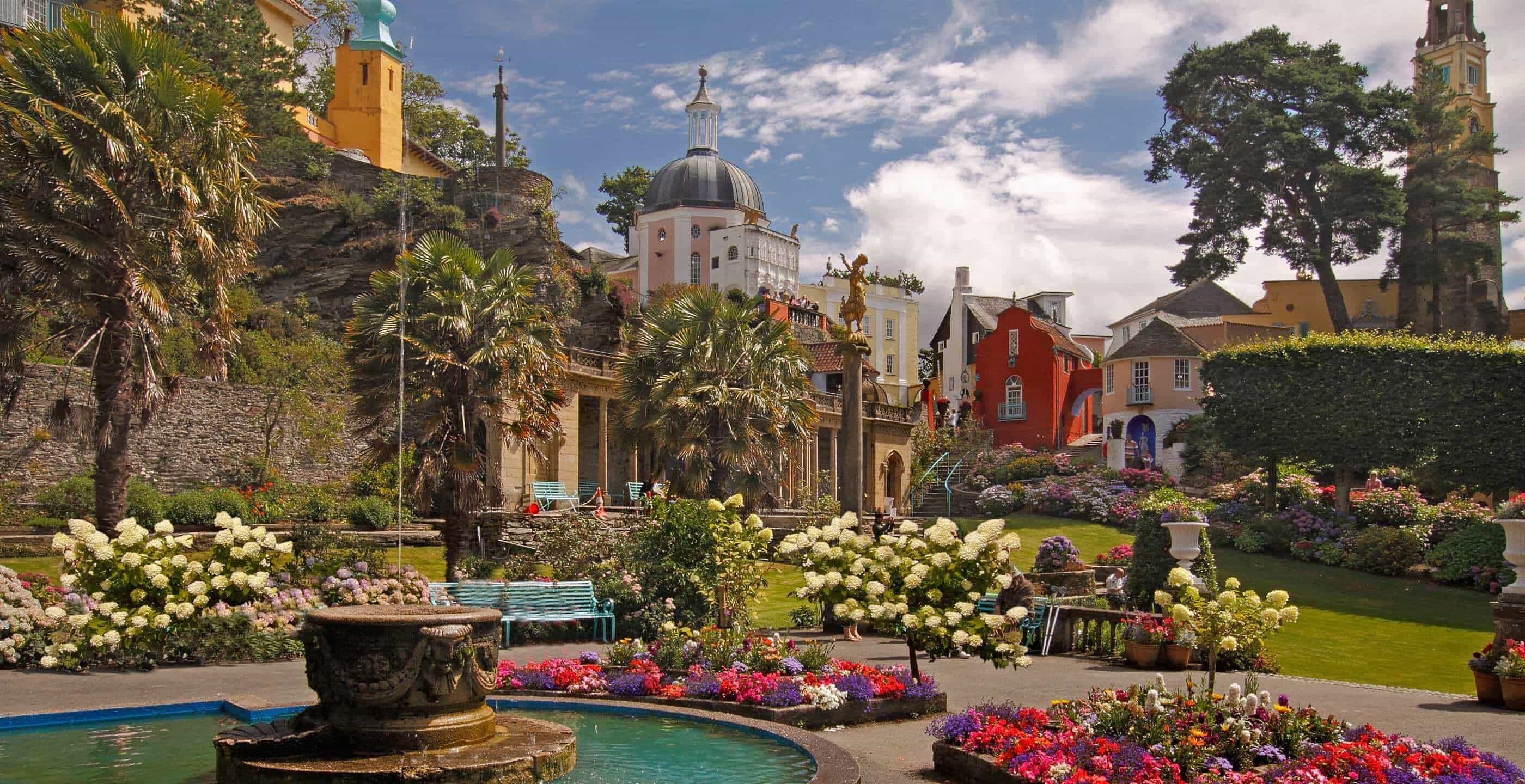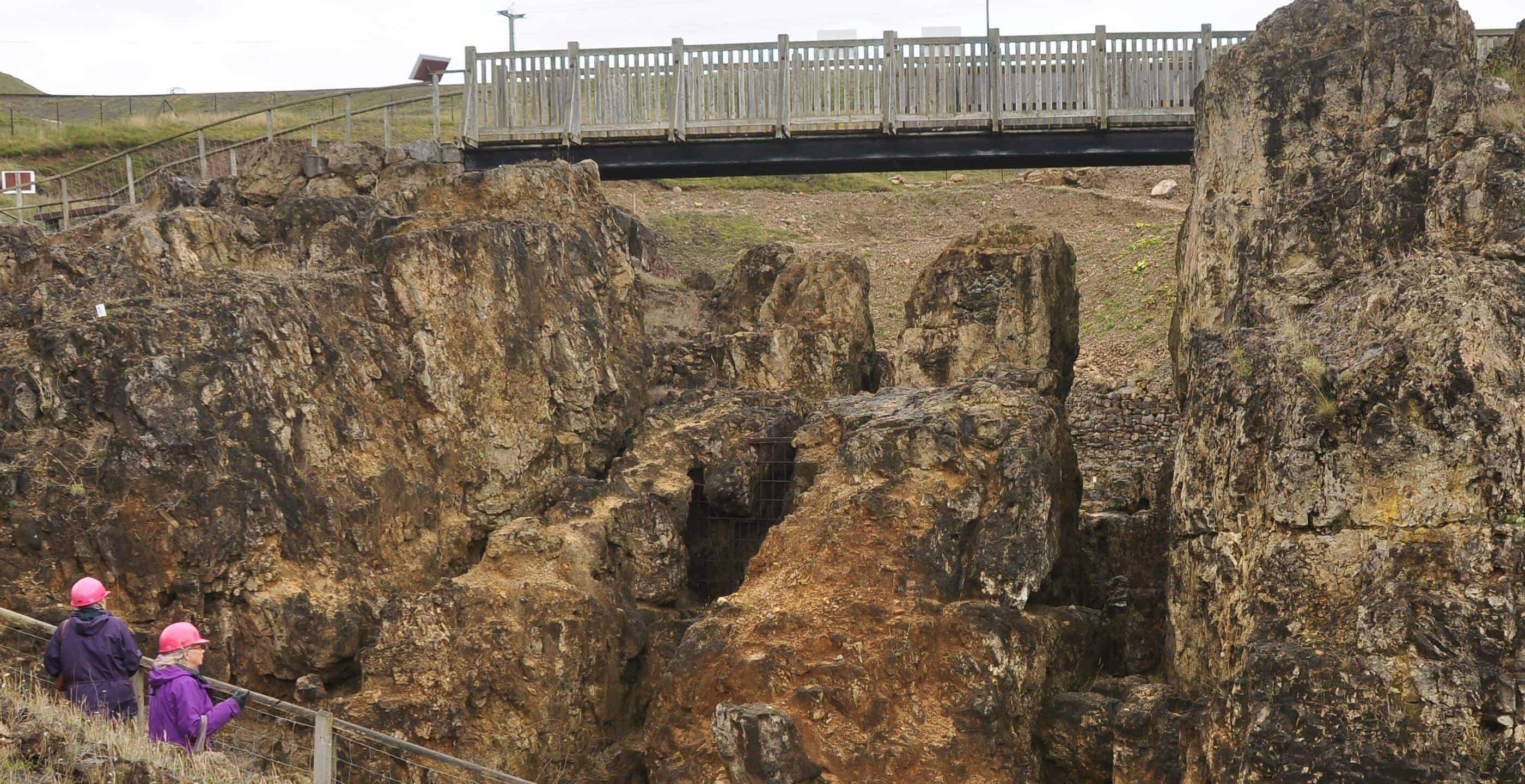Portmeirion, an Italian Riviera inspired paradise nestled on the Welsh coastline. The Italianate village created in the early 1920s by architect Sir Bertram Clough Williams-Ellis is an amazing and inspiring location full of aesthetic wonders from its architecture to its gardens, this tourist hotspot is well worth a visit.
The setting for the tourist village had previously been an estate called Aber Iâ, which means the Ice Estuary in Welsh. This estate had been developed from an eighteenth century foundry and boatyard. The changing of the name occurred when the architect, Sir Clough Williams-Ellis took interest in the location in the early 1920s and used the word ‘port’ referring to its position on the coastline and ‘meirion’ taken from the county of Merioneth and put the two together; the name has been used ever since.
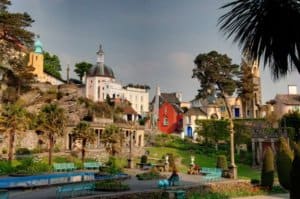
In 1925, the famous architect Sir Williams-Ellis began designing the tourist village, incorporating elements of Italian architecture and design in his buildings and constructions of squares and gardens. Whilst some have speculated that his design was based on the famous and exclusive fishing village of Portofino on the Italian coastline, Sir Williams-Ellis was said to have simply wanted to capture the atmosphere of the Mediterranean, which he accomplished in fabulous style.
In 1926 the village opened its doors to the general public, who were greeted with an awe-inspiring design, transporting the Mediterranean colours and ambience to the Welsh coastline. The village, although compact, includes a variety of different features including Riviera style houses, open spaces, ornamental gardens and Italian plazas dotted around in this unique and picturesque setting.
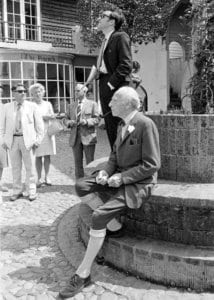 Sir Clough Williams-Ellis at Portmeirion
Sir Clough Williams-Ellis at Portmeirion
Sir Williams-Ellis’ architectural contribution can be noted in his use of arches and different angles and his experimentation of sizing which gives the impression of the village being much larger than it actually is. The attention to detail in both design, architecture and use of outdoor space is exemplary. The tourist destination is based on the waterfront with the Hotel Portmeirion as a centrepiece, marking a site of activity and interest for those wishing to stay the night in this beautiful location.
Wherever you turn in the village, there is something to marvel at, including the Bristol Colonnade based in the picturesque gardens, the Gothic Pavilion and Hercules Hall. Whether you are interested in the ornate architecture and design features or the tranquil settings of gardens and woodlands on the outskirts, the appeal of the village continues to hold throughout the decades and it is not hard to see why it has recently been ranked the sixth most romantic location in Britain.
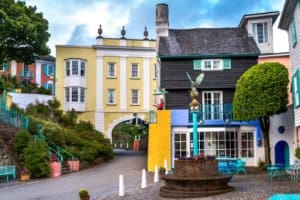
One particularly attractive spot can be found situated amongst the Italian inspired buildings called Battery Square, a small plaza containing accommodation, a spa and a café making it the perfect spot to grab a drink and watch the world go by.
The village is also home to the Round House which is the cottage used to film the spy series of the late 1960s,’The Prisoner’. The cottage is where the character Number Six lived and is now being used as a memorabilia shop, well worth a visit for anyone who was a fan of the show. The attractive buildings and charming vista have made the village a top destination for television series and films, such as Doctor Who in 1976 whose story was based in Renaissance Italy, an episode of Citizen Smith, as well as scenes filmed for the popular series “Cold Feet”.
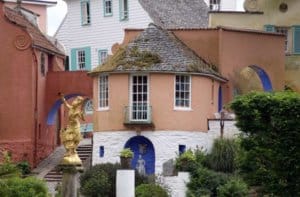
On the outskirts of the village, but within the Portmeirion estate, lies Castell Deudraeth, an impressive mansion which had been built on the site of the remains of a medieval castle, known by the same name. The building with its Gothic façade and imposing crenellations interested Sir Williams-Ellis greatly and in 1931 he purchased the mansion with the ambition to turn it into a hotel as part of the wider tourist complex.
The building had originally belonged to a Victorian Member of Parliament, Sir Osmond Williams, 1st Baronet, who also happened to be the uncle of Sir Williams-Ellis. In the 1930s the impact of the ensuing international conflict of the Second World War resulted in the plans being halted until another time. Fortunately, the idea had not been forgotten and finally with the help of funding from a variety of sources, in 2001 Castell Deudraeth began operating as a hotel and restaurant, fulfilling the original ambitions of Sir Williams-Ellis.
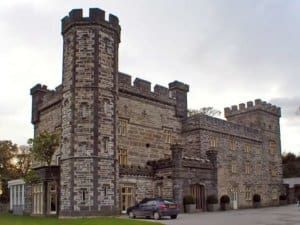 Castell Deudraeth
Castell Deudraeth
The grounds are easily as impressive as the mansion itself, with a beautiful array of exotic plants framed in a wild garden setting, typifying the beauty of the surrounding area. The woodland which frames the estate is a large expanse covering ten-hectares of land sprawling with a range of exotic plants filling the space with splashes of colour and texture, inspired by the original garden designer, George Henry Caton Haigh, an authority on gardening. The legacy was continued by Williams-Ellis and beyond, ensuring the maintenance of both buildings and the grounds. The preservation of his original vision of the Mediterranean picturesque vista continues to make its mark on the rugged beauty of the north Welsh coastline.
The impact of Portmeirion as a coastal tourist hotspot had an important cultural impact not only in architecture and garden design but also pottery, for which it has become famous. Williams-Ellis daughter Susan was also artistically gifted and created pottery in Portmeirion. The ceramics she created really made their mark when in 1960 she took over the Stoke-on-Trent pottery and named it Portmeirion. She never looked back; the business continued to grow and flourish as the traditional flower and foliage motifs are just as popular today as they were back in the 1960s. The earthenware is a must-have souvenir from one of the gift shops in the village, reflecting a cultural legacy which spreads beyond the bricks and mortar of Portmeirion.
The attraction of the village for visitors has not waned over the years as its impact finds new expression, for example, the Festival No.6 which was first held in 2012 and has now become a mainstay of the area every September. An eclectic mix of music, art and comedy held over a three day weekend which is still finding its feet but serves as a fitting tribute to the quirkiness of the village.
The combination of tradition and contemporary ideas continues to be the cornerstone of Portmeirion and that includes Ffestiniog Railway; Minffordd Station is only a short walk away from the village where you can board a traditional steam train which will take you on a beautifully scenic route through Snowdonia.
Portmeirion was the brainchild of one man, Sir Williams-Ellis who in the 1920s sought inspiration from Italy and took his ideas to the north of Wales. His ideas in architecture and design have continued to be a main source of attraction for many visitors who can marvel at the feeling of being transported to another country whilst remaining in the stunning Welsh surroundings. Portmeirion village has had a huge cultural impact in many fields such as pottery, television, art, design, music and architecture and will continue to do so for many years to come.
Jessica Brain is a freelance writer specialising in history. Based in Kent and a lover of all things historical.
It is now possible to stay within Portmeirion Village & Castell Deudraeth, surrounded by acres of wooded gardens overlooking the beautiful Dywryd Estuary.
